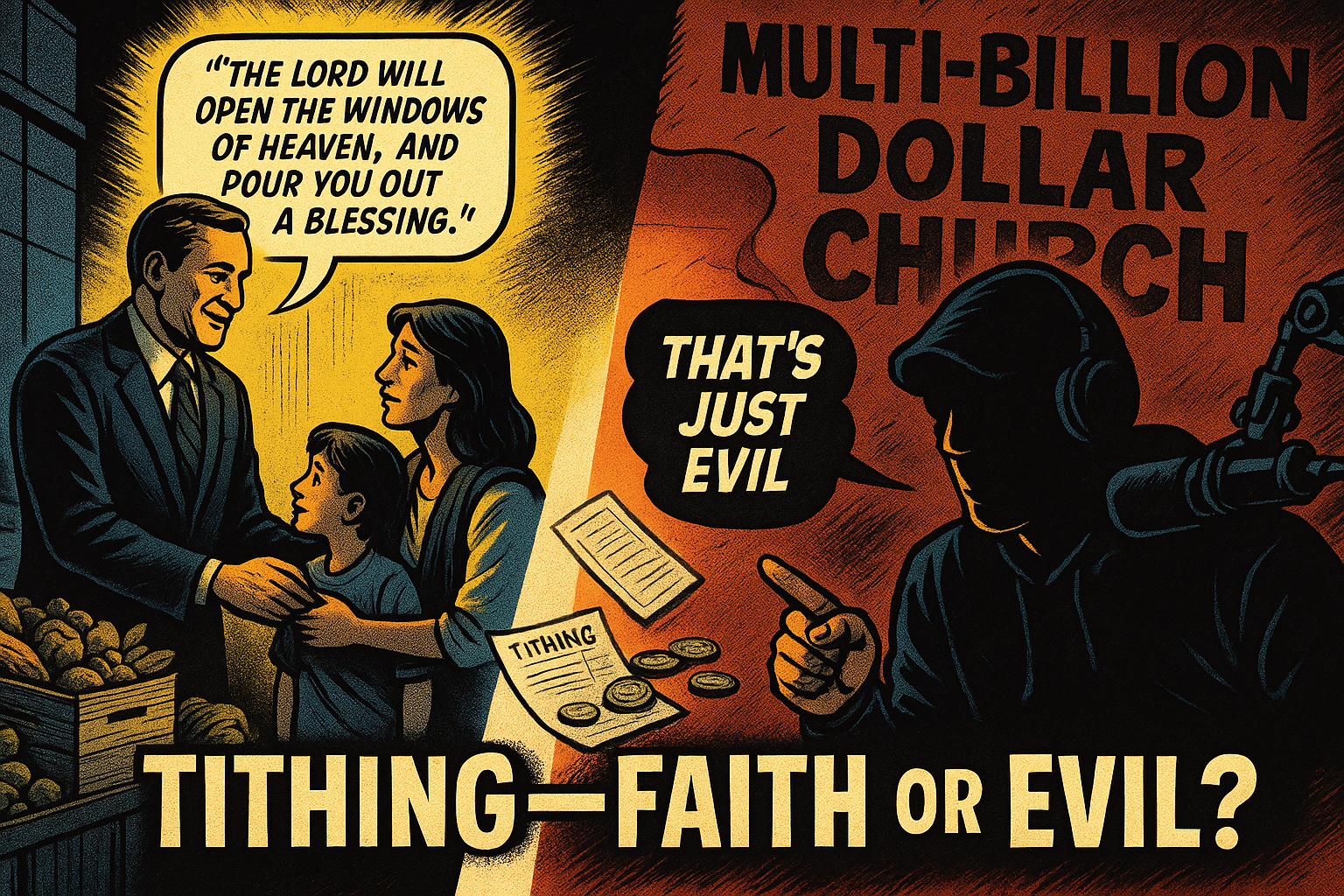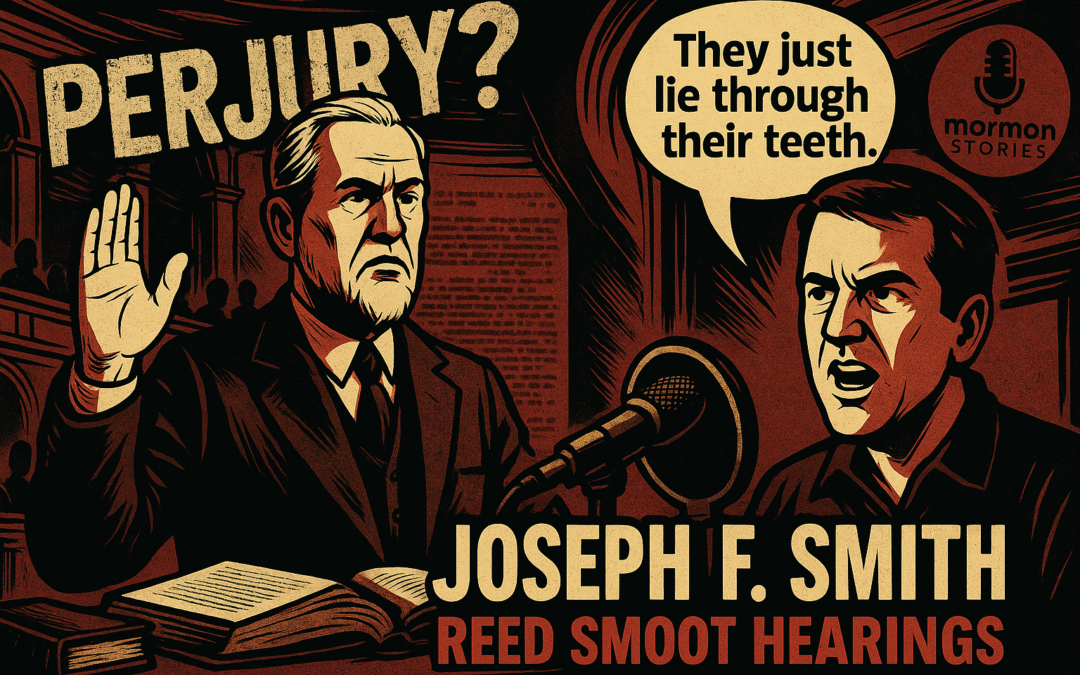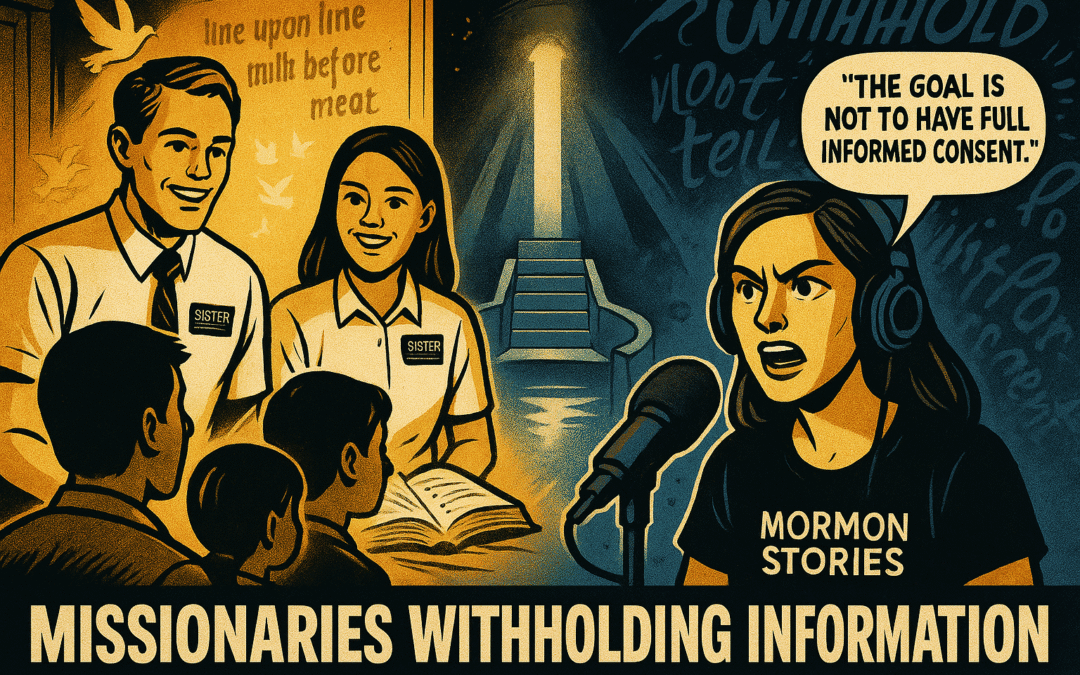
by Anonymous | Aug 10, 2025 | Church Conspiracy, Uncategorized
Bottom Line
The Church does not teach “being gay is a sin.” Chastity is a commandment for all. Missionaries teach this clearly. LGBTQ+ discipleship is real — and Christ’s invitation is inclusive and rooted in truth, not affirmation alone.
| Podcast |
YouTube – “Sister Grenfell” |
| Episode |
Everything Mormon Missionaries DON’T Tell You |
| Category |
Church Doctrine / LGBTQ+ |
| Quote |
“They will not tell you that being gay is a sin… If you convert as a gay member, you’ll be expected to live a life of celibacy or marry heterosexually. That’s the only option.” — “Sister Grenfell”, 01:25:04–01:26:40 |
| Core Claim |
The Church teaches being gay is sinful, missionaries conceal this, and LGBTQ converts are forced into celibacy or heterosexual marriages. |
| Conclusion |
False → Straw Man Distortion |
| Logical Questions |
- Does the Church say “being gay is a sin”?
- Are all members called to live chastity, or just LGBTQ+?
- Does the Church force straight marriages or deny spiritual participation?
|
🔍 Core Finding
💬 Feelings ≠ Sin
The Church distinguishes between orientation and behavior:
“Same-sex attraction itself is not a sin. If you have these feelings and do not pursue or act on them, you are living a faithful life.”
— ChurchofJesusChrist.org: Same-Sex Attraction
⚖️ Missionaries DO Teach the Law of Chastity
All converts are taught that sexual intimacy is reserved for marriage between a man and a woman (D&C 42:22–24). LGBTQ individuals are not singled out — this is a universal standard.
💍 Marriage is Not “Forced”
Church leaders explicitly counsel against entering straight marriages to “resolve” same-gender attraction:
“We counsel against any kind of marriage for purposes of trying to resolve same-gender feelings.”
— Elder Dallin H. Oaks, 2006
❤️ The Gospel is for Everyone
LGBTQ members who keep covenants may:
- Be baptized and confirmed
- Hold callings and serve
- Receive the Holy Ghost and temple recommend
- Be fully loved and supported in their ward
📚 Sources

by Anonymous | Aug 9, 2025 | Uncategorized
Bottom Line
The Church does not tell people not to research. In fact, it funds and provides some of the most transparent historical research archives in global religion. The “don’t research” claim is a smear — and Elder Oaks never said what they say he said.
| Podcast |
Mormonism Live |
| Episode |
Joseph Smith: Hypnotist |
| Category |
False Claim about Church Policy |
| Quote |
“The Mormon church will tell you believe everything we say and don’t research. And I’m serious because Elder Oaks said that. My suggestion is ‘research is not the answer’ is the quote.” — Randall Bell, 00:03:00–00:03:30:contentReference[oaicite:0]{index=0} |
| Core Claim |
The LDS Church discourages research and promotes blind belief, quoting Elder Oaks as saying “Research is not the answer.” |
| Conclusion |
False / Quote Misattribution |
| Logical Questions |
- Did Elder Oaks ever actually say “research is not the answer” in this context?
- What has the Church officially said about study, research, and inquiry?
- Does this quote exist in any published talk or sermon?
|
🔍 Core Finding
This quote is a fabrication and distortion. Elder Dallin H. Oaks has never said “research is not the answer” in any official or published Church source. The actual quote critics misrepresent comes from a 1985 talk entitled “Criticism,” where Elder Oaks discouraged personal attacks on leaders, not research itself. He stated:
“Criticism is particularly objectionable when it is directed toward Church authorities… It does not have to be true to be wrong.”
— BYU Address, 1985
The Church actually encourages study and research:
⚖ Legal & Logical Analysis
- Misattribution Fallacy: Falsely claiming a General Authority said something he never did.
- False Light Risk: Misrepresenting LDS leaders as hostile to inquiry.
- Emotive Framing: Leveraging a fake quote to suggest cultic control.
Bottom Line
The Church does not tell people not to research. In fact, it funds and provides some of the most transparent historical research archives in global religion. The “don’t research” claim is a smear — and Elder Oaks never said what they say he said.
📚 Sources

by Anonymous | Aug 9, 2025 | Church Conspiracy
Bottom Line
Calling tithing “evil” isn’t brave. It’s lazy. The Church doesn’t let the poor starve. It feeds them — with food and with faith. Doctrine without context isn’t truth. It’s a talking point.
| Podcast |
YouTube – Anonymous Creator |
| Episode |
“How the Mormon Church Secretly Built a $293 Billion Fortune” |
| Category |
Tithing Ethics & Accusations of Harm |
| Quote |
“You’re giving this multi-billion dollar church your 10%. Food or tithing — pay tithing. How can you say that with a straight face? That’s just evil.” — Narrator, 00:56:05 |
| Core Claim |
The Church’s tithing doctrine causes harm to the poor and is morally evil. |
| Conclusion |
Emotional Assertion / Intentionally Misframed Doctrine |
🔍 Core Findings
The narrator calls the Church’s tithing doctrine “evil” — but leaves out the spiritual framework, the voluntary nature of tithing, and the welfare resources available to every member. It’s not coercion — it’s consecration. And the Church teaches both sacrifice and support.
📖 What the Church Actually Teaches
- Tithing is voluntary and confidential.
- Bishops are trained to help anyone in need, regardless of donation history.
- Members are not denied food, rent, or employment support because they don’t tithe.
📖 Scriptural Principle
“The Lord will open the windows of heaven… and pour you out a blessing.”
— Malachi 3:10
To believers, tithing is a spiritual act of trust — not a contract. You may disagree with that faith, but calling it “evil” ignores what it actually means to the people who live it.
📚 Sources

by Anonymous | Aug 9, 2025 | Church Leaders
Bottom Line
Joseph F. Smith’s legal testimony deserves scrutiny—not slander. Disagree with his tone or decisions, but do not accuse him of perjury without proof.
| Podcast |
Mormon Stories – John Dehlin |
| Episode |
“New Document Shows LDS Church Hid and Denied its own Prophet’s Polygamy Revelation” |
| Category |
Church Leadership Integrity |
| Quote |
“They subpoena Mormon leaders to go back to Washington… and under oath they have to talk about polygamy and they don’t want to and they dance around it. They play semantic games and sometimes honestly they just lie through their teeth.” — Narrator, 01:00:39–01:01:06 |
| Core Claim |
Joseph F. Smith lied under oath during the Reed Smoot hearings. |
| Conclusion |
Defamatory Risk / Misleading |
| Logical Questions |
- Was Joseph F. Smith ever charged with perjury?
- What did his actual testimony include?
- How is cautious legal language different from falsehood?
|
🔍 Core Finding
The claim accuses Joseph F. Smith of criminal dishonesty in a federal hearing—without presenting evidence. This raises potential defamation concerns. Legal transcripts of the Reed Smoot hearings show that Smith answered questions carefully but directly under oath, reflecting the sensitive nature of polygamy history and institutional responsibility.
Church leaders at the time faced intense scrutiny from government and press alike. Ambiguity in testimony is not equivalent to lying unless proven false and intentional. No court or official ever ruled Smith perjured himself, nor was he charged with such.
⚖️ Legal vs. Narrative Accuracy
- Testimony was cautious but within legal bounds.
- No legal body found him guilty of perjury or misleading Congress.
- Charging someone with “lying through their teeth” without evidence is reputationally and legally reckless.
📚 Sources

by Anonymous | Aug 9, 2025 | Church Conspiracy
Bottom Line
To claim that missionaries “don’t want full informed consent” is spiritually cynical and doctrinally untrue. The gospel invites faith, not frontloading. Missionaries teach with spiritual integrity under priesthood keys. Converts are responsible for their own seeking, prayer, and confirmation.
| Podcast |
YouTube – “Sister Grenfell” (Ex-Missionary Creator) |
| Episode |
Everything Mormon Missionaries DON’T Tell You |
| Category |
Missionary Practices / Alleged Concealment |
| Quote |
“And so all of that is important to share. so that you can understand that a missionary’s goal is to get you baptized… It’s not to explain everything about the church. The goal is not to have full informed consent.” — “Sister Grenfell”, 00:04:59–00:05:10 |
| Core Claim |
Missionaries deliberately avoid teaching full doctrine or “informed consent” and are primarily focused on securing baptisms quickly, potentially misleading converts. |
| Conclusion |
Misleading |
| Logical Questions |
- Does Preach My Gospel explicitly instruct missionaries to withhold information?
- What is the “milk before meat” principle and is it deceitful?
- Are converts truly uninformed at baptism, or are they introduced progressively in line with scriptural precedent?
|
🔍 Core Finding
📘 Do Missionaries Fast-Track Without Full Consent?
No. Preach My Gospel outlines a principle-based teaching framework where spiritual preparation and doctrinal understanding are nurtured line upon line (Isaiah 28:10, D&C 19:22). The focus is on spiritual readiness, not deceptive omission.
🥛 Meat Before Milk — Scriptural Not Secret
The “milk before meat” principle originates in scripture (1 Corinthians 3:2; Hebrews 5:12–14). Even Jesus withheld deeper teachings from disciples until they were spiritually ready (John 16:12). This is not deception — it’s sacred pacing.
🧾 Informed, Not Overloaded
Missionaries are not university professors giving a full religious dissertation. They are guides, introducing foundational principles as taught by Christ (faith, repentance, baptism). Conversion requires personal study, prayer, and spiritual confirmation — not academic overload (Moroni 10:4–5).
⚖️ Is it Informed Consent?
Yes — baptismal candidates must:
- Attend church multiple times
- Meet with missionaries and local leaders
- Affirm belief in restored gospel, commandments, and the Savior
- Pass a formal interview on commandments including tithing, chastity, Word of Wisdom, and sustaining Church leaders
All outlined in General Handbook 38.2.1.
📚 Sources





